Honeywell HPA200 Review
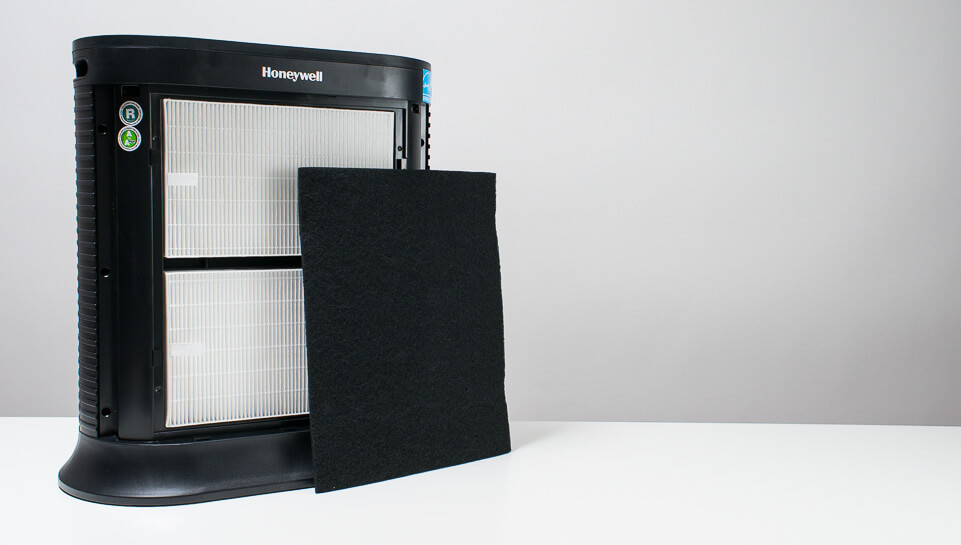
Feature Scores
Pros
- 5 year warranty – longer than most other air purifier warranties
- Good set of features – control panel lights turn off completely, timer
- Fairly portable for size - not particularly light for size but handles on each side make it easy to pick up and move around
- Black finish is good for not getting dirty easily
- HEPA filter – the industry standard for particle filtration
Cons
- No true pre-filter – carbon acts as pre-filter and needs to be replaced more often because of it
- Very poor energy efficiency – well below average CFM/watt ratio on all speeds including medium; on its lowest setting = only 2 CFM/watt vs 20 CFM/watt one a top rated unit like the Coway Mighty. 87 watts on turbo (at approx. 200 CFM) vs approx. 72 watts for Coway Mighty on its highest fan speed at greater output (250 CFM)
- Poor CFM/dB ratio – high noise output
Editor's Score
Quick Facts
| Particle filter type | 2x HEPA |
|---|---|
| Gas filter type | Carbon |
| Pre-Filter | No dedicated filter - carbon filter is also pre-filter |
| Output | Approx. 200 CFM |
| Air Movement | Front grille > carbon filter > HEPA filter > up and out of top of unit |
| Number of fan speeds | 4 – low, medium, high, and turbo |
| Size | 17.5 in. tall x 19 in. wide x 10 in. deep |
| Weight | 13.5 lb. |
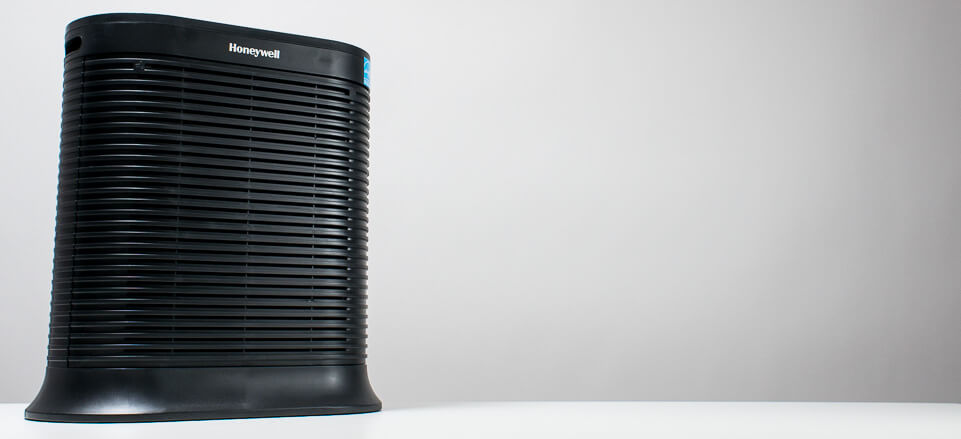
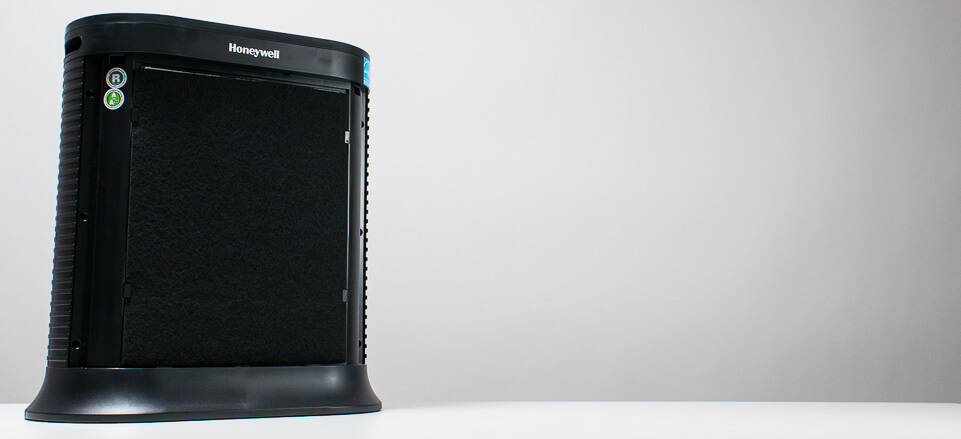
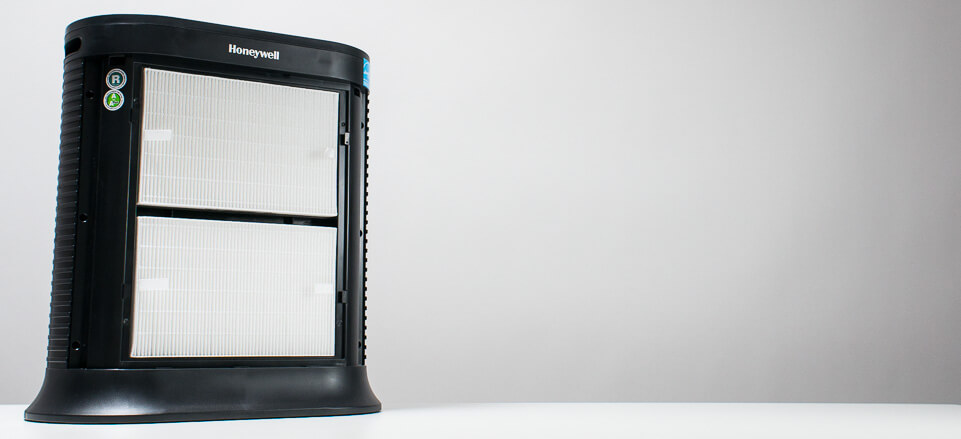
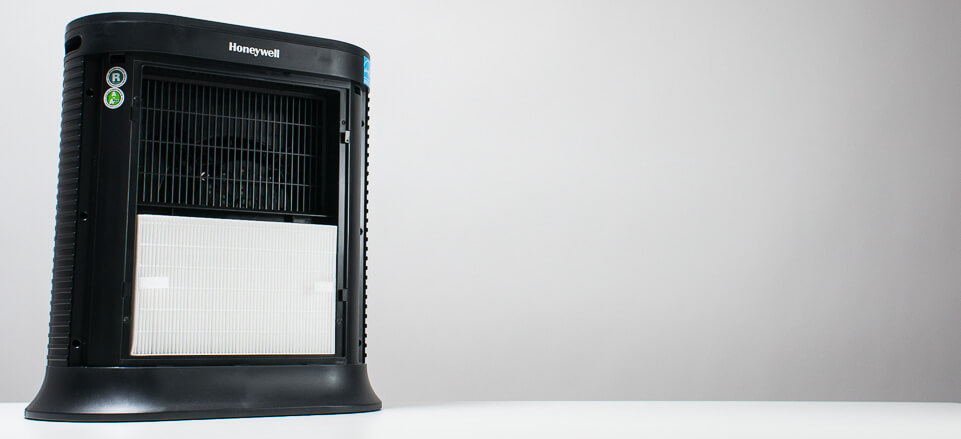
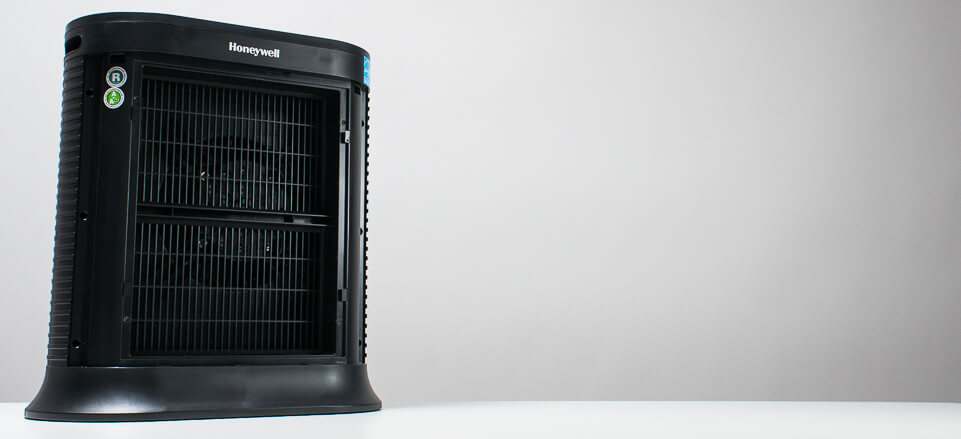
Analysis
A step by step breakdown of the HPA200's performance.
Air Processing Performance
Test Results
In a 150 sq. ft. test environment the HPA200 at 200 CFM was able to lower particle concentration in the room from 10,000 particles per cubic ft. down to 1,000 particles per cubic ft. in 11 minutes. This is only 1 to 2 minutes slower than most 250 CFM units (the Coway Mighty and Winix 5500-2 are two examples) and about twice as fast as most 100 CFM units (for example, the Honeywell HPA100) – unsurprising considering it has twice the output (CFM).
After 24 additional minutes (for a total of 11+24 = 35 minutes), the unit was able to lower room particle concentration all the way down to 100 particles per cubic ft. – making it just as effective as higher CFM units (e.g. Coway Mighty, Winix 5500-2) in achieving what is essentially completely clean air in such a size room, although it did take longer to do so. The Coway took a total of 23 minutes and the Winix took a total of 15 minutes.
Filter Analysis
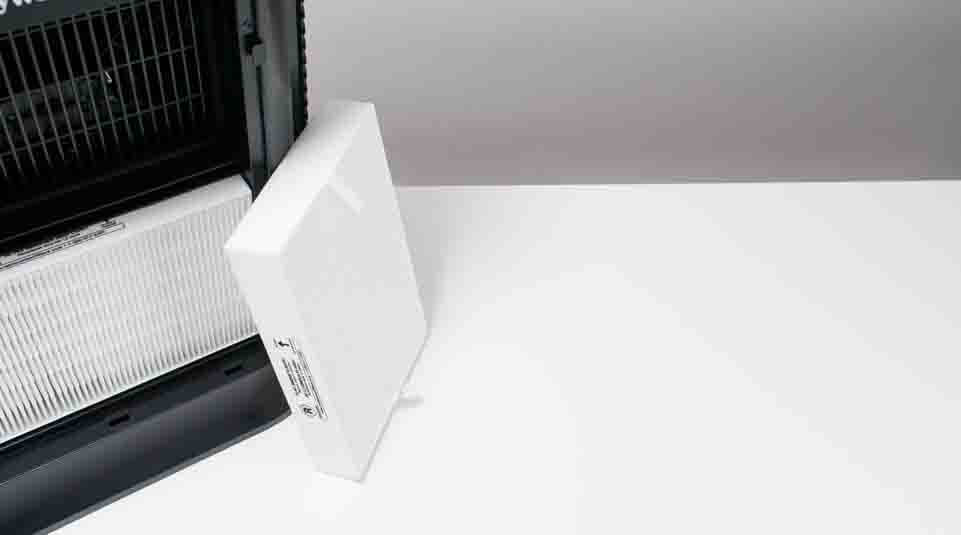
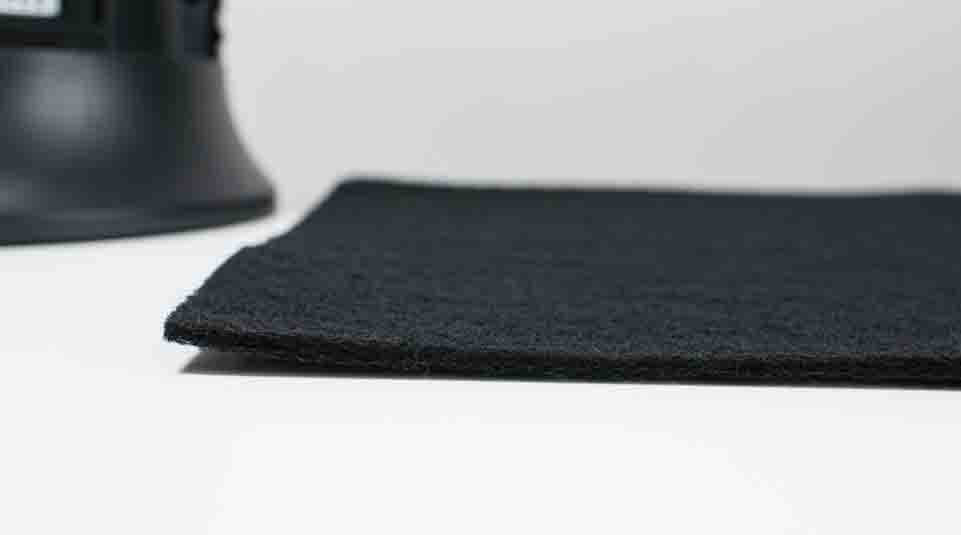
The HPA200 is equipped with two HEPA filters stacked next to each other. These filters are the exact same filters used in the smaller HPA100. The HPA200 just has two of them while the HPA100 only has one.
HEPA filtration is the industry standard for particle filtration (pollen, dust, smoke, etc.). It provides 99.97% efficiency. That is to say, 99.97% of particles that travel through a HEPA filter are captured by the filter. This is obviously a very high level of efficiency.
This Honeywell unit is also equipped with a carbon filter to filter out unwanted gases like VOCs and odors. The carbon filter is placed over the two HEPA filters and so air entering the unit first travels through this filter. This means that any large particles will be captured by the carbon filter, instead of the HEPA filters.
This is a good thing in that it extends the lives of the HEPA filters. The carbon will saturate quickly with these large particles and so it has to be replaced quite frequently. The HEPA filters will not saturate with these particles and so they will last longer. The HEPA filters are more expensive to replace than the carbon filter which is why this can be viewed as a good thing.
This is also a bad thing when you consider that comparable units on the market (like the Coway Mighty and Winix 5500-2) come equipped with an additional separate washable pre-filter. This separate pre-filter extends the life of both the HEPA filter AND the carbon filter. Thus, both filters need to be replaced less frequently.
Air Movement
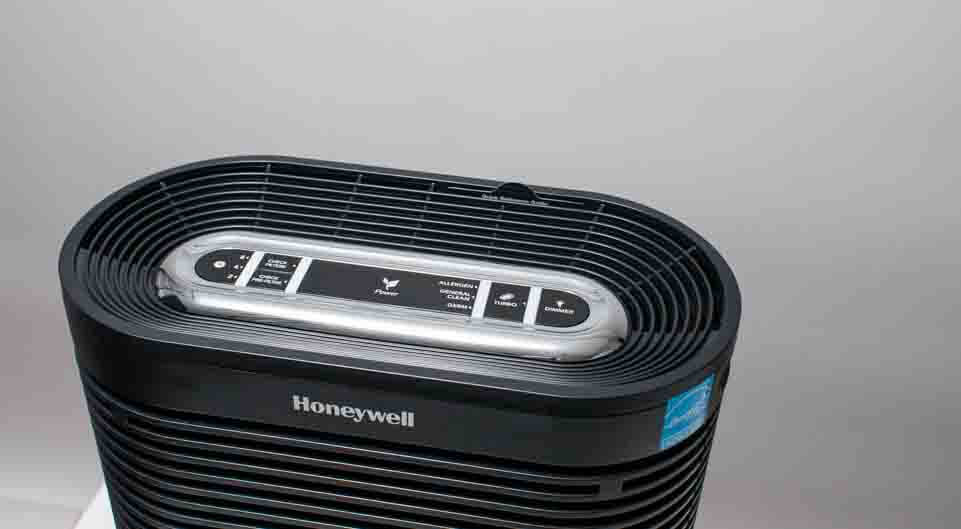
The HPA200 has a maximum output of approx. 200 cubic feet per minute (CFM), meaning it can process (clean) a block of 200 cubic feet of air every minute. At this output and taking into account its high efficiency particle filters (2x HEPA filters) along with our test results we can confidently say that it’s able to service a room up to about 250 sq. ft.
Note that it does need to be set to maximum fan speed to service a 250 sq. ft. room. On this fan speed it’s quite loud. On lower fan speeds it’s much quieter but won’t be able to effectively lower room concentration in such a large room.
Here are our fan speed vs area of coverage recommendations:
Again, on turbo (highest fan speed) it can service a 250 sq. ft. room. On high (second highest fan speed) it can service a 200 sq. ft. room and, on medium (third highest) a 150 sq. ft. room, and on low a 100 sq. ft. room.
Energy Efficiency
This unit, like other Honeywell units in the HPA line, exhibits poor energy efficiency.
On max. settings at 200 CFM of output the unit draws 86.6 watts of power. A top rated unit like the Coway Mighty draws less power – 72.3 watts – with greater output – 250 CFM.
On lower settings at approx. 100 CFM of output the HPA200 draws 62.1 watts while the Coway draws only 8.1 watts of power.
If you’re looking for an energy efficient air purifier, look elsewhere.
Noise Output
This unit also exhibits high noise output considering its CFM.
On max. settings at 200 CFM of output it was measured to produce 69.6 dB of noise for a CFM/dB ratio of 2.77. For comparison, the Coway Mighty was measured to produce less noise – 66.1 dB – at a greater output (250 CFM) for a CFM/dB ratio of 3.75.
Note that you can run the unit on lower settings where it will be fairly quiet. On low it was measured at 50.9 dB. However, this is still a considerably worse result than competition with even greater output on lower settings. For example, the Coway Mighty was measured at approx. 40 dB on low.
Durability
The HPA200’s build quality is on par with that of the HPA100. It is essentially nothing more than a larger version of the HPA100. The problem here is that the HPA100 is half the price. Units similarly priced to the HPA200 are much better built with higher quality parts.
Ease of Use
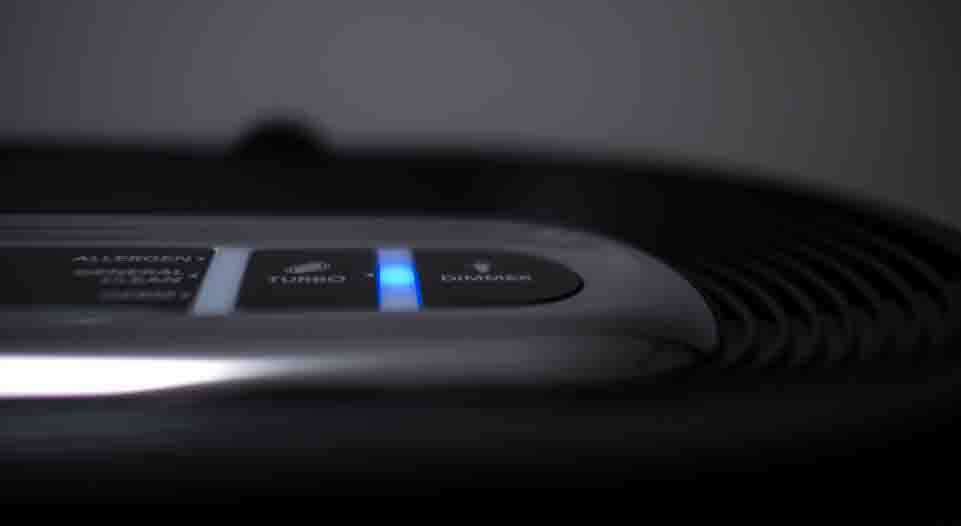
A strong point for all HPA series units, including the HPA200, is the fact that they have control panel lights that can be completely turned off. This isn’t the case for most other air purifiers on the market, including top rated units like the Coway Mighty and Winix 5500-2.
HPA series units including the HPA200 are also more portable than most other air purifiers on the market because they feature two side pocket handles which makes them very easy to lift up and move around. Most other air purifiers on the market either have no handle or a single handle on the back.
This unit does have a timer although it has no remote or Smart functionality (no app control).
Value
This unit scores poorly in the category for several reasons.
First, is its poor energy efficiency. Poor energy efficiency results in higher energy cost (for what you get) over time compared to units with good energy efficiency.
Second, is its high filter replacement costs. Recall that this unit requires two HEPA filters and that those filters are exact same filters used in the HPA100.
The problem here is that Honeywell prices filter replacement for the HPA100. Filter replacement cost for the HPA100 is fairly reasonable and competitive but as soon as you double the cost – it starts becoming very expensive. This becomes even more egregious with the HPA300 which requires three of the same filter.
Finally, this unit just doesn’t offer very good value considering its initial price compared to its output, features, and performance in our real world tests (notably energy efficiency and noise output). For about the same price or only very slightly more you can buy the Coway Mighty which we’ve shown to outperform the Honeywell in multiple categories above, not to mention its greater output and separate pre-filter. For a lower initial price you can buy the Winix 5500-2 which has greater output (250 CFM), a better carbon filter (see our review for more info), a separate pre-filter, and also comes with a remote. The Winix, like the Coway, outperforms the HPA200 in important categories like energy efficiency and noise output as well.
Add a Comment
Have a question or comment? Let us know below.

Comments